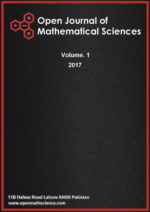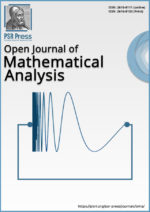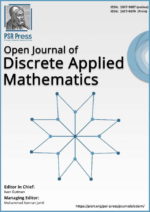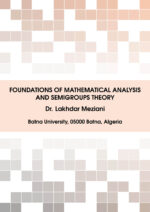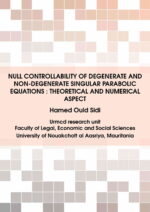Ptolemy Scientific Research Press (PSR Press)is a highly regarded publisher of scientific literature dedicated to bringing the latest research and findings to a broader audience. With a focus on cutting-edge research and technology, Ptolemy Scientific Research Press offers a range of publications catering to professionals, researchers, and student’s needs. Whether looking for information on the latest breakthroughs in physics, biology, engineering, or computer science, you can trust Ptolemy Scientific Research Press to deliver insightful, accurate, and engaging content. With its commitment to quality, accessibility, and innovation, Ptolemy Scientific Research Press is an essential resource for anyone interested in science and technology.

Latest Published Articles
OMS-Vol. 4 (2020), Issue 1, pp. 98 – 109 Open Access Full-Text PDF
Ricardo Estrada
Abstract: We present a method to find the sum of a convergent series based on the computation of Hadamard finite part limits of partial sums. We give several illustrations, the main being the formulas for convergent series of the type \(\sum_{n=2}^{\infty}\frac{\left( -1\right) ^{n}\zeta\left( n,a\right) b^{n+k}}{n+k},\) where \(\zeta\left( s,a\right)\) is Hurwitz zeta function, \(\left\vert b\right\vert \leq\left\vert a\right\vert ,\) \(b\neq-a,\) and \(k\in\mathbb{N}.\)
Existence result for a singular semipositone dynamic system on time scales
OMS-Vol. 4 (2020), Issue 1, pp. 86 – 97 Open Access Full-Text PDF
Arzu Denk Oguz, Fatma Serap Topal
Abstract: We concentrate on investigating the existence of positive solutions for the system of second order singular semipositone m-point boundary value problems in this article. We emphasize that the nonlinear term may take a negative value and be singular. By the properties of Green’s function and applying fixed point theorem in cones, existence results for positive solutions are obtained. Also, we provide an example to make our results clear and easy for readers to understand the existence result.
Fractional integrals inequalities for exponentially \(m\)-convex functions
OMS-Vol. 4 (2020), Issue 1, pp. 78 – 85 Open Access Full-Text PDF
Sajid Mehmood, Ghulam Farid
Abstract: Fractional integral operators are very useful in mathematical analysis. This article investigates bounds of generalized fractional integral operators by exponentially \(m\)-convex functions. Furthermore, a Hadamard type inequality have been analyzed and, special cases of established results have been discussed.
Risk evaluation in information systems using continuous and discrete distribution laws
EASL-Vol. 3 (2020), Issue 1, pp. 35 – 44 Open Access Full-Text PDF
Ajit Singh, Amrita Prakash
Abstract: The paper construct continuous and discrete distribution laws, used to assess risks in information systems. Generalized expressions for continuous distribution laws with maximum entropy are obtained. It is shown that, in the general case, the entropy also depends on the type of moments used to determine the numerical characteristics of the distribution law. Also, probabilistic model have been developed to analyze the sequence of independent trials with three outcomes. Expressions for their basic numerical characteristics are obtained, as well as for calculating the probabilities of occurrence of the corresponding events.
On a hyper-singular equation
OMA-Vol. 4 (2020), Issue 1, pp. 8 – 10 Open Access Full-Text PDF
Alexander G. Ramm
Abstract: The equation \(v=v_0+\int_0^t(t-s)^{\lambda -1}v(s)ds\) is considered, \(\lambda\neq 0,-1,-2…\) and \(v_0\) is a smooth function rapidly decaying with all its derivatives. It is proved that the solution to this equation does exist, is unique and is smoother than the singular function \(t^{-\frac 5 4}\).
Wiener index of hexagonal chains under some transformations
ODAM-Vol. 3 (2020), Issue 1, pp. 28 – 35 Open Access Full-Text PDF
Andrey A. Dobrynin, Ehsan Estaji
Abstract: The Wiener index is a topological index of a molecule, defined as the sum of distances between all pairs of vertices in the chemical graph. Hexagonal chains consist of hexagonal rings connected with each other by edges. This class of chains contains molecular graphs of unbranched catacondensed benzenoid hydrocarbons. A segment of length \(\ell\) of a chain is its maximal subchain with \(\ell\) linear annelated hexagons. We consider chains in which all segments have equal lengths. Such chains can be uniquely represented by binary vectors. The Wiener index of hexagonal chains under some operations on the corresponding binary vectors are investigated. The obtained results may be useful in studying of topological indices for sets of hexagonal chains induced by algebraic constructions.

